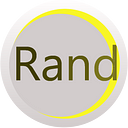Member-only story
Classify Images Using Convolutional Neural Networks & Python
Build your own CNN using Keras
In this article I will show you how to create your very own Convolutional Neural Network (CNN) to classify images using the Python programming language and it’s library keras !
If you prefer not to read this article and would like a video representation of it, you can check out the video below. It goes through everything in this article with a little more detail and will help make it easy for you to start programming your own Convolutional Neural Network (CNN) model even if you don’t have the programming language Python installed on your computer. Or you can use both the video and this article as supplementary materials for learning about CNN’s!
Start Programming:
First I will write a description of what this program will do. This way when I look back at it later on in the future, I or someone else knows exactly what it does.
# Description: This programs classifies images